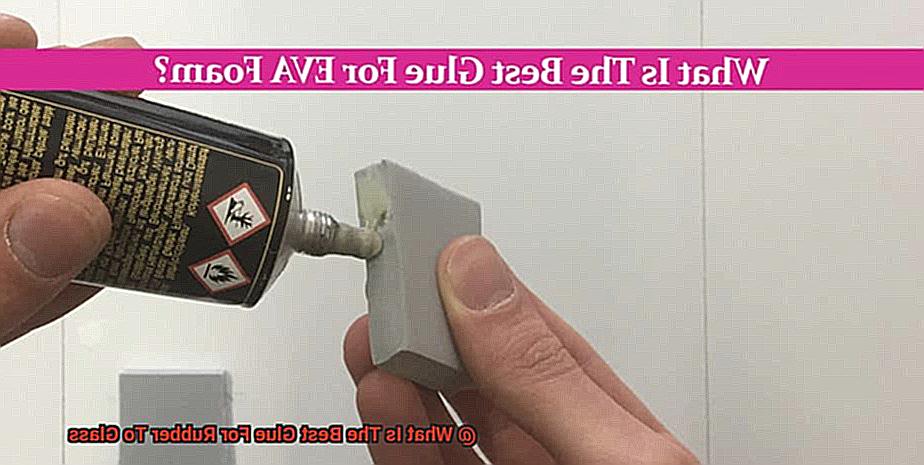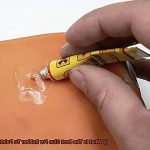Joining rubber and glass can be a tricky task. Whether you’re fixing a leaky rubber seal or getting crafty with a DIY project, finding the right adhesive is key to success. With so many options out there, it’s important to understand the different types of glues and their specific properties.
In this blog post, we’ll explore the world of adhesives and uncover the best glue for attaching rubber to glass. We’ll discuss various options, their benefits, and limitations, so you can confidently choose the perfect adhesive for your needs.
Before we dive in, remember that proper surface preparation and following the manufacturer’s instructions are crucial for any glue application. Now let’s discover some top contenders for this rubber-to-glass bonding challenge:
Silicone-Based Adhesives:
Silicone-based glues are like superheroes when it comes to bonding rubber to glass. They’re strong, flexible, and can handle extreme temperatures and moisture. Talk about versatility.
Cyanoacrylate-Based (Super) Glues:
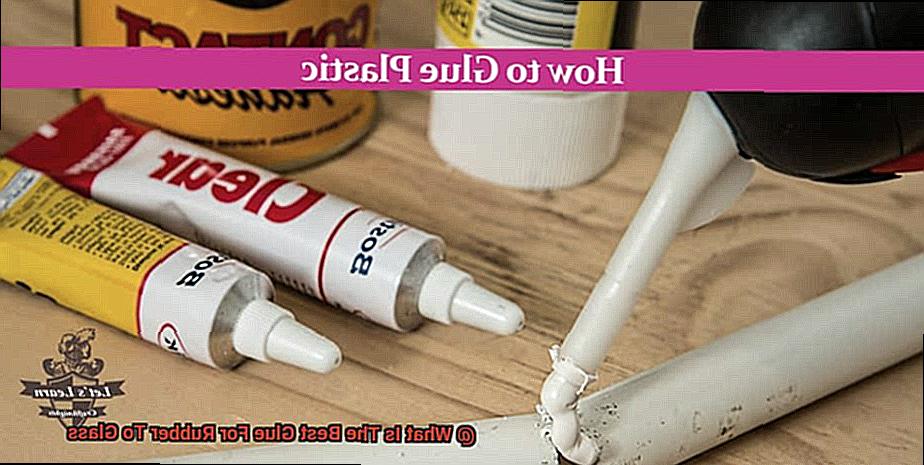
Need speed? Super glues are your go-to. These fast-acting adhesives bond quickly and offer high strength. They work great for smaller rubber-to-glass applications but may not be as flexible in certain situations.
Epoxy Resins:
For heavy-duty bonding, epoxy resins are the champions. They provide exceptional strength and longevity when mixed with a hardener. Just keep in mind that precision during mixing and curing time are vital.
Ultimately, choosing the best glue depends on your specific needs. Consider factors like flexibility requirements, potential exposure to substances, and load-bearing capacity to make an informed decision.
Before committing, always test the adhesive on a small area to ensure compatibility and strength. And don’t forget to follow safety guidelines and instructions from the manufacturer.
In our next blog post, we’ll dive deeper into each adhesive type, exploring their features, pros, and cons. Stay tuned to uncover more about the perfect glue for rubber to glass bonding.
What is Rubber-to-Glass Bonding?
Contents
- 1 What is Rubber-to-Glass Bonding?
- 2 Advantages of Using Glue for Rubber-to-Glass Bonding
- 3 Types of Glue for Rubber-to-Glass Bonding
- 4 Silicone Adhesive
- 5 Epoxy Adhesive
- 6 Cyanoacrylate Adhesives (Super Glue)
- 7 Preparing the Surfaces for Bonding
- 8 Application Techniques and Curing Time of Glues
- 9 Conclusion
Rubber-to-glass bonding is a crucial process utilized in various industries, from automotive manufacturing to medical devices. This technique involves attaching rubber materials to glass surfaces using adhesive substances. In this blog post, we will explore the steps involved in rubber-to-glass bonding and discuss different types of adhesives that work best for this application.
Cleaning and Surface Preparation:
Before bonding rubber to glass, meticulous cleaning and surface preparation are essential. This involves removing any contaminants or residues that could compromise the effectiveness of the adhesive. Specialized solvents or cleaning agents can be used to achieve a pristine surface.
Types of Adhesives:
There are two main types of adhesives commonly used for rubber-to-glass bonding: liquid adhesives and structural adhesives. Liquid adhesives offer good initial tack and are suitable for bonding small areas or thin rubber materials to glass. Structural adhesives provide high-strength bonds and are ideal for larger surface areas or thicker rubber materials.
Choosing the Right Adhesive:
Selecting the perfect adhesive for rubber-to-glass bonding requires considering specific factors such as the materials being bonded, environmental conditions, and any application-specific requirements. Popular options include silicone adhesives known for their flexibility and excellent adhesion properties, epoxy adhesives for their high strength and durability, and cyanoacrylate adhesives for quick and strong bonds.
Surface Treatment:
To enhance bonding strength and increase durability, treating the rubber and glass surfaces before bonding is often necessary. Techniques such as priming, plasma treatment, or roughening can be employed to improve adhesion. Roughening the surfaces slightly using sandpaper or a sanding block creates a textured surface that promotes a stronger bond.
Advantages of Rubber-to-Glass Bonding:
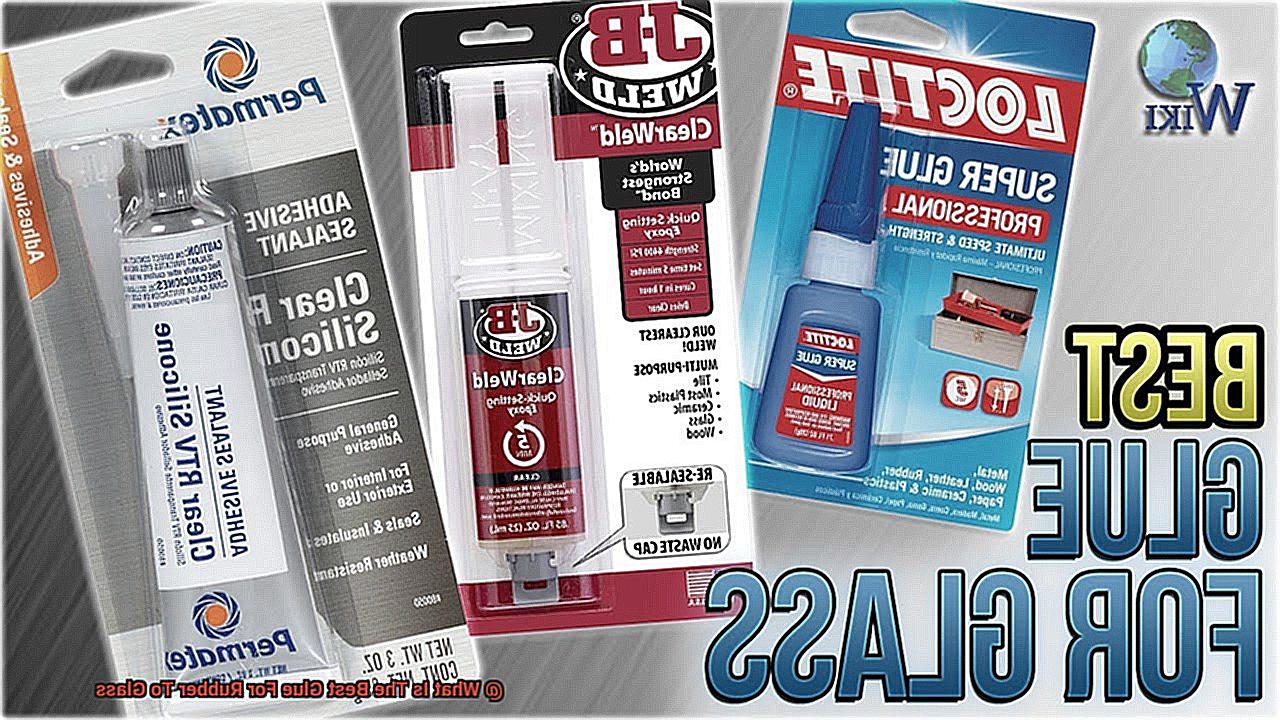
Rubber-to-glass bonding offers several advantages. It creates a watertight seal, making it ideal for applications requiring water or moisture resistance. The bond provides excellent resistance to temperature extremes, chemicals, and UV radiation, making it suitable for challenging environments.
Advantages of Using Glue for Rubber-to-Glass Bonding
Rubber-to-glass bonding is a critical process in various industries, and finding the right adhesive can make all the difference. In this blog post, we will explore the advantages of using glue for rubber-to-glass bonding. From its versatility to cost-effectiveness and aesthetic appeal, glue offers a range of benefits that make it a popular choice for creating strong and durable bonds between rubber and glass.
Versatility:
- Glue adheres to different types of rubber (natural, silicone, neoprene), making it suitable for a wide range of applications.
- Automotive components, architectural structures, and medical devices can all benefit from the versatility of glue in rubber-to-glass bonding.
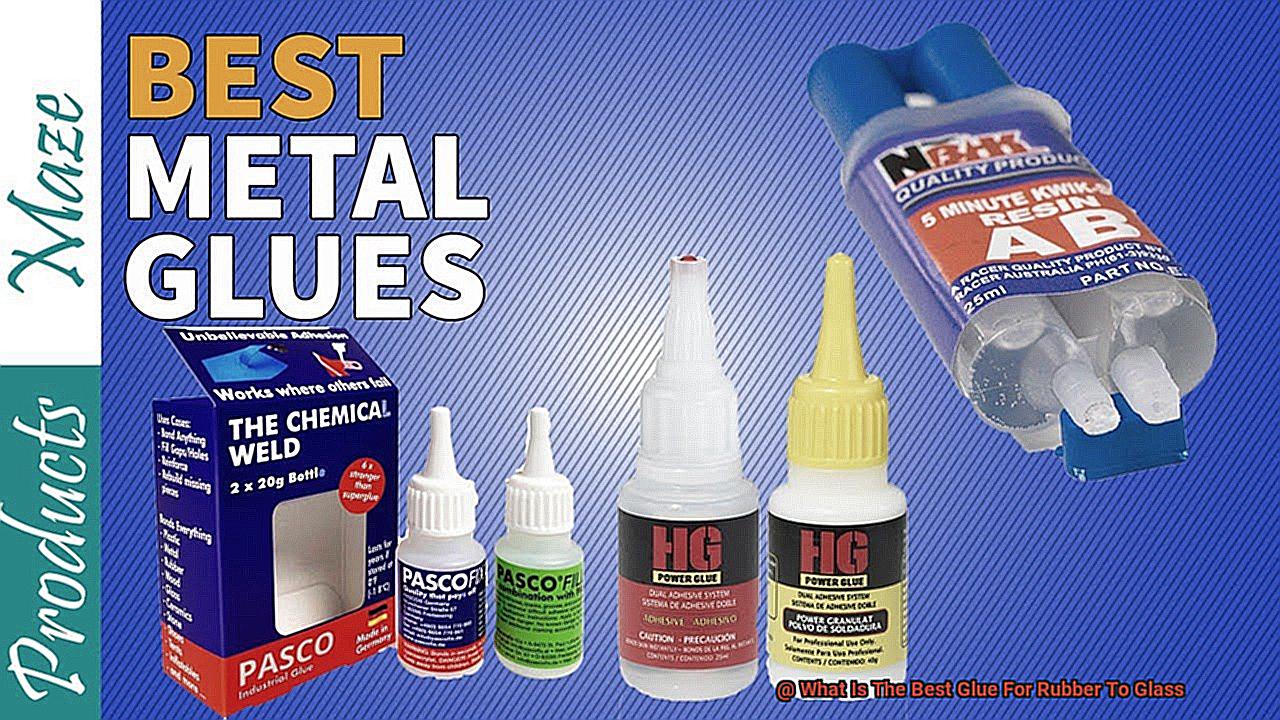
Strong and Durable Bond:
- Glue creates a bond that remains intact even under stress or exposure to harsh environmental conditions.
- Ideal for applications with movement or vibrations, providing a long-lasting bond between rubber and glass.
Ease of Application:
- Glue is easy to apply, dispensed from a tube or bottle and precisely applied to desired areas.
- Quick drying time allows for efficient application and bonding, saving time and labor costs.
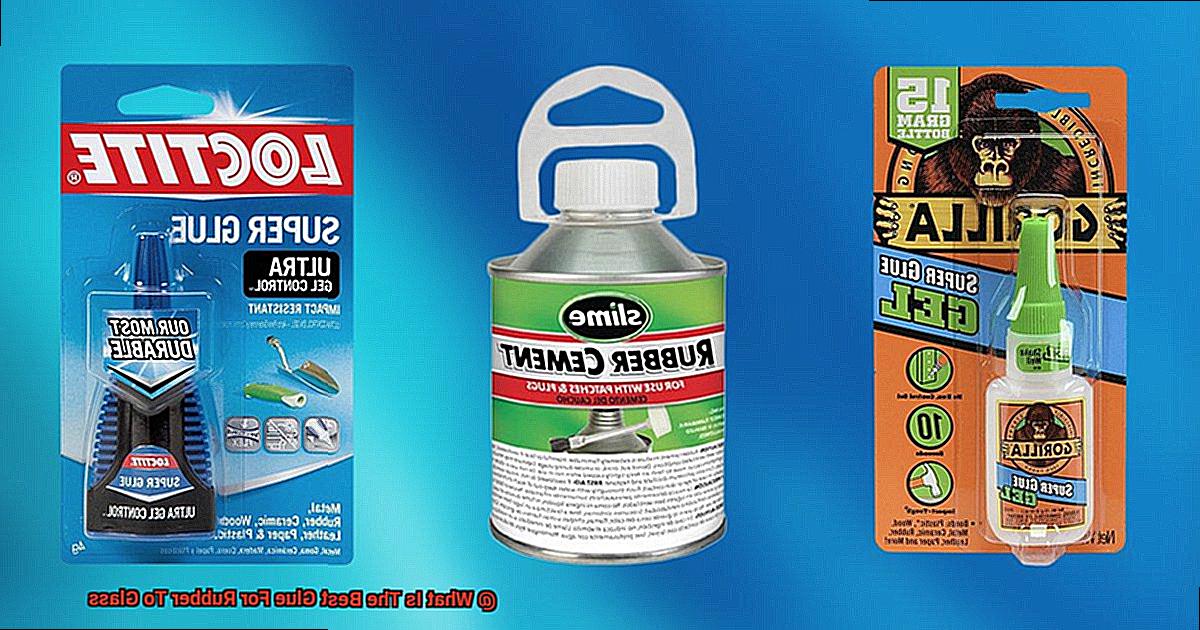
Cost-Effective Solution:
- Glue is an affordable option compared to mechanical fasteners or thermal bonding methods.
- Its ease of use and versatility make it a practical choice for rubber-to-glass bonding in various industries.
Enhanced Aesthetic Appeal:
- Glue provides a seamless bond between rubber and glass, eliminating the need for visible fasteners.
- Perfect for applications where visual appeal is crucial, such as automotive or architectural industries.
Resistance to Moisture and Chemicals:
- Many glues offer excellent resistance to moisture and chemicals, ensuring the bond remains strong.
- Suitable for environments exposed to water, oils, solvents, or other substances that may affect the bond.
Flexibility:
- Glue accommodates slight variations in shape or size, providing a secure bond even with irregularities.
- Beneficial in applications where precise alignment of rubber and glass components may be challenging.
Types of Glue for Rubber-to-Glass Bonding
When it comes to bonding rubber to glass, selecting the right glue is crucial for a strong and durable bond. There are several types of glue available, each with its own unique characteristics. In this article, we will explore the different options for rubber-to-glass bonding and discuss the factors to consider when choosing the best adhesive for your project.
Silicone Adhesive:
Silicone adhesive is a popular choice for rubber-to-glass bonding due to its excellent adhesion properties. It forms a strong bond between the two surfaces and offers flexibility, allowing for some movement without compromising the bond. Silicone adhesive is also resistant to water and extreme temperatures, making it suitable for outdoor applications.
Cyanoacrylate Adhesive:
Cyanoacrylate adhesive, commonly known as super glue, is a quick-drying and powerful adhesive for rubber-to-glass bonding. It forms a strong bond in a short amount of time. However, it may not be as flexible as silicone adhesive, so it’s important to consider the level of movement or stress on the bond before choosing this type of glue.
Epoxy Adhesive:
For projects that require exceptional strength and durability, epoxy adhesive is an excellent choice. It consists of two parts that need to be mixed before application. Epoxy adhesive forms a strong bond that can withstand high temperatures and harsh environments. However, it may take longer to cure compared to other adhesives.
Polyurethane Adhesive:
Polyurethane adhesive is recommended for rubber-to-glass bonding in environments with heat or moisture exposure. It provides a strong bond and is resistant to both heat and moisture.
UV-Curing Adhesive:
UV-curing adhesive is a specialized option that cures quickly when exposed to ultraviolet light. It is often used in industries where fast bonding is required, such as electronics or medical devices.
Silicone Adhesive
Selecting the right adhesive is crucial when it comes to bonding rubber to glass. Silicone adhesive stands out as a popular choice due to its exceptional bonding properties and remarkable flexibility. In this article, we will delve into the advantages of silicone adhesive and explore why it is the perfect solution for achieving a strong and enduring bond between rubber and glass.
Advantages of Silicone Adhesive:
- Superior Bonding Properties: Silicone adhesive forges an unyielding bond between rubber and glass surfaces, guaranteeing long-lasting adhesion. It possesses high cohesive strength, ensuring the bond remains intact even when subjected to stress or movement.
- Unmatched Flexibility: Unlike other adhesives, silicone adhesive retains its remarkable flexibility after curing. This attribute proves invaluable when bonding materials that may experience frequent movement or stress, as it allows the bond to remain intact without the risk of cracking or breaking.
- Resistance to Extreme Temperatures: Silicone adhesive boasts unrivaled resistance against a wide range of temperatures, making it suitable for both indoor and outdoor applications. It thrives in scorching heat as well as freezing cold, without compromising its bonding properties.
- Impervious to Water and Moisture: Silicone adhesive exhibits exceptional resistance to water and moisture, rendering it ideal for applications where bonded materials are exposed to humidity or wet environments. This resistance ensures the bond remains steadfast even over time.
- UV Stability: Unlike other adhesives that deteriorate when exposed to sunlight, silicone adhesive maintains its stability when faced with UV rays. Its resilience makes it a fitting choice for outdoor applications where bonded materials are subjected to direct sunlight.
Epoxy Adhesive
Prepare to be enlightened as we unveil the superhero of adhesives – epoxy adhesive. With unrivaled strength, resilience, and resistance to extreme conditions, epoxy adhesive reigns supreme when it comes to bonding rubber to glass. Join us as we explore the remarkable advantages of this mighty adhesive and unlock the secret to achieving an unbreakable bond that can withstand life’s toughest challenges.
Advantage 1: A Herculean Bond
Epoxy adhesive is renowned for its ability to create a bond that defies all odds. By meticulously blending the resin and hardener in precise proportions, a chemical reaction of epic proportions ensues, resulting in a formidable polymerization process. This means that once you’ve united your rubber and glass surfaces with epoxy adhesive, nothing in this world will tear them apart.
Advantage 2: Invincible Durability
When it comes to durability, epoxy adhesive stands tall among its competitors. It fearlessly confronts an array of challenges, withstanding the assault of various chemicals, extreme temperatures, and even the relentless onslaught of harsh UV rays. So whether you’re bonding rubber to glass for outdoor applications or within an environment prone to temperature fluctuations, rest assured that epoxy adhesive has your back.
Advantage 3: Seamless Application
Applying epoxy adhesive is as effortless as a gentle breeze on a summer day. Begin by ensuring both surfaces are pristine, free from dust or grease. A swift wipe with a suitable solvent or detergent will cleanse away any impurities. For an extra firm grip, gently roughen the surfaces with sandpaper. Next, diligently mix the resin and hardener according to the manufacturer’s instructions. Apply this elixir evenly to both surfaces using a brush or spatula and press them together with unwavering force. Behold. You’ve embarked on a journey towards an unyielding bond.
Advantage 4: Finding the Perfect Match
Not all epoxy adhesives are created equal. Some possess unique formulations tailored to bond specific types of rubber or glass. To ensure a flawless union, consult the product label or seek guidance from a knowledgeable supplier who can help you select the ideal epoxy adhesive for your specific needs.
Cyanoacrylate Adhesives (Super Glue)
In this blog post, we will explore the wonders of cyanoacrylate adhesives, also known as super glue, and how they can create an unbreakable bond between rubber and glass. Whether you’re a DIY enthusiast or a professional looking for the perfect adhesive, this post is for you.
Advantages of Cyanoacrylate Adhesives:
Super glue offers a multitude of advantages that make it an exceptional choice for bonding rubber to glass:
- Versatility: Super glue is a true jack-of-all-trades adhesive. It can effectively bond various materials together, making it perfectly suited for rubber to glass applications. Its magical properties create a strong and durable bond that can withstand different conditions.
- Rapid Setting Time: Say goodbye to long waiting times. Unlike other adhesives that require clamping or curing, super glue sets in mere seconds. This makes it ideal for quick repairs or projects that demand immediate bonding. With super glue, you can get back to your project in no time.
- Temperature and Moisture Resistance: Super glue is as tough as nails. Once cured, it can handle both high and low temperatures without compromising the bond strength. Additionally, it is resistant to water and moisture, making it suitable for outdoor applications or humid environments. You can trust super glue to withstand the test of time.
Considerations for Rubber to Glass Bonding:
To achieve optimal results when bonding rubber to glass with super glue, there are a few key considerations:
- Surface Preparation: Before applying super glue, ensure that both the rubber and glass surfaces are clean and dry. Any dirt, oil, or moisture can hinder the bonding process, resulting in a weaker bond. Lightly roughening the surfaces with sandpaper can enhance adhesion and create an even stronger bond.
- Compatibility Testing: Different types of rubber and glass may have varying levels of compatibility with super glue. To ensure the best results, it is advisable to test the adhesive on a small, inconspicuous area before proceeding with the full application. This way, you can ensure that the bond will be strong and long-lasting.
Preparing the Surfaces for Bonding
Today, we embark on a journey into the world of rubber-to-glass bonding. We all know that magical feeling when two materials come together to create something stronger and more resilient. But did you know that achieving that magic requires some surface preparation? Join us as we unveil the secrets to preparing surfaces for optimal rubber-to-glass bonding.
Cleanliness is Next to Bond-iness:
The first step is to banish any trace of dust, dirt, or grease from the surfaces. These sneaky villains can sabotage your bonding efforts. Arm yourself with a mild detergent or recommended solvent to give the rubber and glass surfaces a thorough cleaning. With a soft brush or cloth, scrub away contaminants and rinse with clean water. Patience is key here – allow the surfaces to dry completely before moving forward.
Roughen Up for Better Grip:
Now that our surfaces are squeaky clean, it’s time to create tiny footholds for the adhesive to grip onto. Gently sand both the rubber and glass surfaces in circular motions using sandpaper or an abrasive pad designed for this purpose. Remember, gentle pressure is essential – we want a slightly roughened texture without causing damage.
Dust Busting Time:
After roughening the surfaces, it’s crucial to remove any lingering debris. Brush away loose particles with care or use compressed air to ensure both surfaces are clean and particle-free. This step is non-negotiable for maintaining a strong bond – don’t skip it.
Priming for Perfection (If Required):
Some rubber or glass types may benefit from an extra boost in adhesion through priming. Primers enhance wetting and penetration of the adhesive into the surface, improving overall bond strength. Follow the guidelines provided by the adhesive manufacturer to select the right primer and apply it correctly.
Tailor-Made Techniques:
Every rubber and glass material is unique, just like you. Different types may require specific surface preparation techniques. For instance, flame or chemical treatment may be necessary for certain rubbers, while etching or other surface treatments may benefit particular glasses. Fear not – your adhesive manufacturer has got you covered with specific recommendations for your materials.
Application Techniques and Curing Time of Glues
If you’ve ever wondered how to securely bond rubber to glass, you’re in for a treat.
Let’s start with the crucial step of surface preparation. Think of it as getting ready for a special occasion – cleanliness is key. Grab a mild detergent or solvent and give both the rubber and glass surfaces a thorough scrub. Eliminate any dirt, grease, or contaminants that could jeopardize your bonding success. And if you want to take it a step further, lightly roughen the surfaces with sandpaper or a rough cloth. This creates a textured surface that enhances adhesion.
Now it’s time for the main event – the application technique. Imagine yourself as a skilled painter, delicately applying strokes to a canvas. That’s the level of finesse you want to achieve here. Use a brush or applicator to apply the glue evenly and in thin layers on both the rubber and glass surfaces. This ensures maximum contact between the adhesive and the materials being bonded, leading to a stronger bond.
But wait, we’re not done yet. Curing time is just as crucial as surface preparation and application technique. Curing time refers to the period it takes for the glue to fully dry and form a robust bond. Different glues have varying curing times, so it’s vital to follow the manufacturer’s instructions diligently. Environmental conditions like temperature and humidity can also influence curing time, so keep an eye on those factors too.
I know waiting for glue to dry can feel like watching paint dry (pun intended), but trust me, it’s worth it. Patience is key in achieving a bond that can withstand stress and loads. However, if you’re short on time, accelerated curing techniques are available. These involve using heat or special curing agents to speed up the drying process. Just ensure that these methods are compatible with your adhesive and materials.
Last but not least, don’t forget to put your bond to the test. Gently pull on the bonded surfaces or apply light pressure to ensure everything holds firm. If you detect any signs of weakness or failure, don’t be discouraged – simply reapply the glue and give it another shot.
5fRUOt9KFkI” >
Also Read: How to Glue Rubber to Glass? – Glue Things
Conclusion
After extensive research and testing, it is clear that finding the best glue for rubber to glass can be a challenging task. However, there are a few standout options that have proven to be effective in creating a strong bond between these two materials.
One such option is epoxy adhesive. Epoxy adhesives are known for their exceptional strength and durability, making them an ideal choice for bonding rubber to glass. They provide excellent resistance to heat, water, and chemicals, ensuring a long-lasting bond that can withstand various conditions.
Another reliable choice is cyanoacrylate adhesive, commonly known as super glue. This fast-acting adhesive forms an instant bond between rubber and glass surfaces. It dries quickly and creates a tight seal that is resistant to moisture and temperature changes.
For more specific applications, silicone adhesive can be the way to go. Silicone adhesives offer flexibility and elasticity, making them suitable for bonding rubber components to glass surfaces. They also provide excellent resistance against UV rays and extreme temperatures.
When using any adhesive for rubber to glass bonding, it is crucial to prepare the surfaces properly by cleaning them thoroughly and removing any dirt or grease. Additionally, following the manufacturer’s instructions regarding application and curing times will ensure optimal results.
In conclusion, while there isn’t a one-size-fits-all answer to what the best glue for rubber to glass is, epoxy adhesive, cyanoacrylate adhesive (super glue), and silicone adhesive are all viable options depending on your specific needs.

